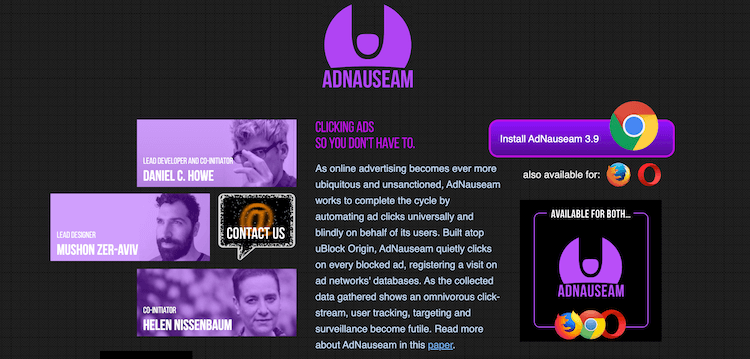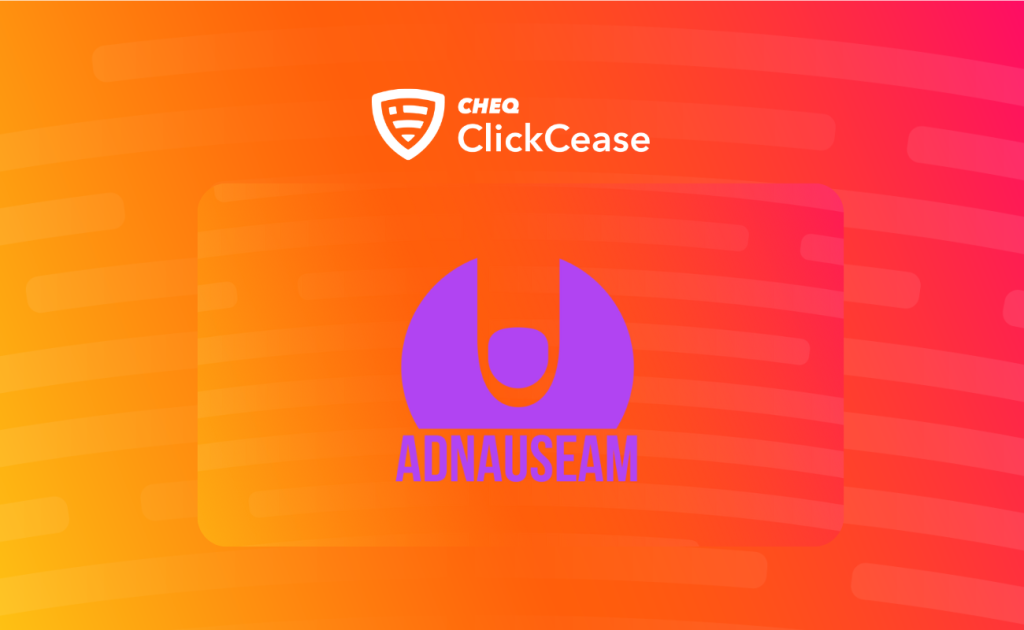Ad blockers have become a popular way for users to browse the internet without the annoyance of pop-up ads or the obtrusive display banners on websites. But one ad blocker has taken it a step further; the AdNauseam browser extension.
By both blocking ads and clicking on them, AdNauseam is unique in that it registers clicks and impressions on EVERY ad that the user might be exposed to as an obfuscation tactic. In short, AdNauseam creates invalid clicks on ads.
The aim of the AdNauseam browser is not to defraud advertisers but to intentionally skew data to confuse advertisers. Or, more specifically, to confuse the ad platform’s tracking.
But why?
Ad tracking vs. the public
The issue around data privacy and the digital giants having so much information on us is one of the great current debates. We already know that by using platforms like Google and Facebook, we are handing over a lot of personal information.
There are pluses and minuses, of course.
On the one hand, it significantly enhances ad placement efficiency for marketers, resulting in more effective and relevant advertising for customers.
On the other hand, it’s a privacy issue that the general public is apprehensive about. No one wants eyes on their private lives, especially when they don’t know the depth of the surveillance or how much of their personal information Google has access to. And this great information harvesting also generates Google $120 billion in ad revenue every year.
Perhaps most alarming to the average internet user is how precise and prescient they can be, almost as if Google can read your thoughts. Of course, Google can’t read your mind literally, but it can read it through your online activities and search history. The search engines utilize sophisticated profiling algorithms to sift through gigabytes of user data to recommend the most relevant ads for each user in real-time.
For marketers, this incredible technology means we can target a very specific demographic for a relatively low budget. Compare PPC marketing to TV advertising, for example.
But for us as internet users, it can be a bit disconcerting.
This explains why ad-blockers have gained so much popularity among web users. However, some people want to go beyond simple blocking and instead flip a middle finger to the eye in the (digital) sky.
Enter AdNauseam.
What is AdNauseam Browser Extension?
As the blurb on their website states:
“AdNauseam is…designed to protect users from tracking by advertising networks. At the same time, AdNauseam serves as a means of amplifying users’ discontent with advertising networks that disregard privacy and facilitate bulk surveillance agendas.”

Put simply, AdNauseam is designed to click ads with the explicit goal of scrambling data and costing advertisers money.
The AdNauseam extension is a free download available for Firefox and Opera and is used by an estimated 216,400 people. Although this sounds like a relative drop in the ocean in terms of internet users, we’ll soon see why this is an issue.
Previously the AdNauseam extension was available for Google’s Chrome browser, but it has been removed from the Chrome Store – for obvious reasons.
However, AdNauseam is still available for Chrome users who want to download and install it themselves (as seen in the image above).
And when we consider that the average user is exposed to hundreds of display ads each day, a lot of money is obviously lost to the invalid clicks generated by the AdNauseam extension.
Is it ethical?
The debate between whether Google Ad targeting is ethical vs. whether a browser extension should be allowed to click ads blindly is the stuff of dinner party conversation. To summarize it here…
It’s a gray area.
On one hand, Google doesn’t find it unethical to trade and monetise their users’ data but has a problem with a browser extension clicking ads in their app store. From a business perspective, allowing someone to click their ads and do nothing about it, well… That would be a bit silly.
So, in 2017, Google Chrome, understandably, banned the browser extension from its Chrome Web Store.
But as we’ve seen, at least 216,000 people still use AdNauseam with their regular browser activity. And this means that those invalid clicks are still part of the problem for advertisers.
How much does AdNauseam cost advertisers?
The practice of ad fraud, in general, costs the digital marketing industry an estimated $40 billion each year. But this includes everything from organized criminal ad fraud networks, click farms, fake accounts, poor ad placement, and misattribution.
How much does the AdNauseam extension really contribute to this? Surely this small volume of spam clicks from a browser extension can’t cost billions each year?
That being said, with 216,000 using AdNauseam on a regular basis, we’ve worked out a (very) rough estimate of the cost of AdNauseam.
Assuming the average user sees around 100 display ads per day across search and social and that the average cost per click (according to WordStream for display ads) is $0.63.
This accounts for a rough total of around $63 of lost advertising revenue per customer.
Multiply that by 216,000, and you’re looking at $13,608,000 each day.
Each year? AdNauseam costs advertisers an estimated $4.9 billion.
A shockingly high figure. But how accurate is it?
The truth is, it’s hard to say exactly. The data used in this article is based on software downloads, average click prices, and a rough estimate of the number of ads seen each day.
But even at a fraction of that amount, the lost revenue could be eye-watering.
Spotting and blocking invalid traffic
Most ad platforms have some level of invalid traffic protection for their advertisers. However, AdNauseam is unique in that it carries out clicks based on genuine user activity.
This makes clicks from AdNauseam very tricky to block. In fact, most ad networks would see this as genuine user engagement.
Click fraud prevention tools such as ClickCease provide a level of protection to advertisers that the ad platforms won’t.
Setting click thresholds and flagging up suspicious behavior are two key features of ClickCease and a major help in avoiding invalid impressions on your display campaigns.
In fact, ClickCease’s machine learning-based behavior analysis can flag up a user generating unusual traffic. We then blacklist this device, and all our users benefit from this insight.
Marketers and business owners must be more careful with their ads than ever. From competitor clicks and organized ad fraud to sneaky technology such as the AdNauseam browser. It’s never been more important to monitor exactly who clicks your paid campaigns.
Run a free audit on your Google Ads, Bing Ads, and Facebook Ads campaigns with our 7-day trial.
